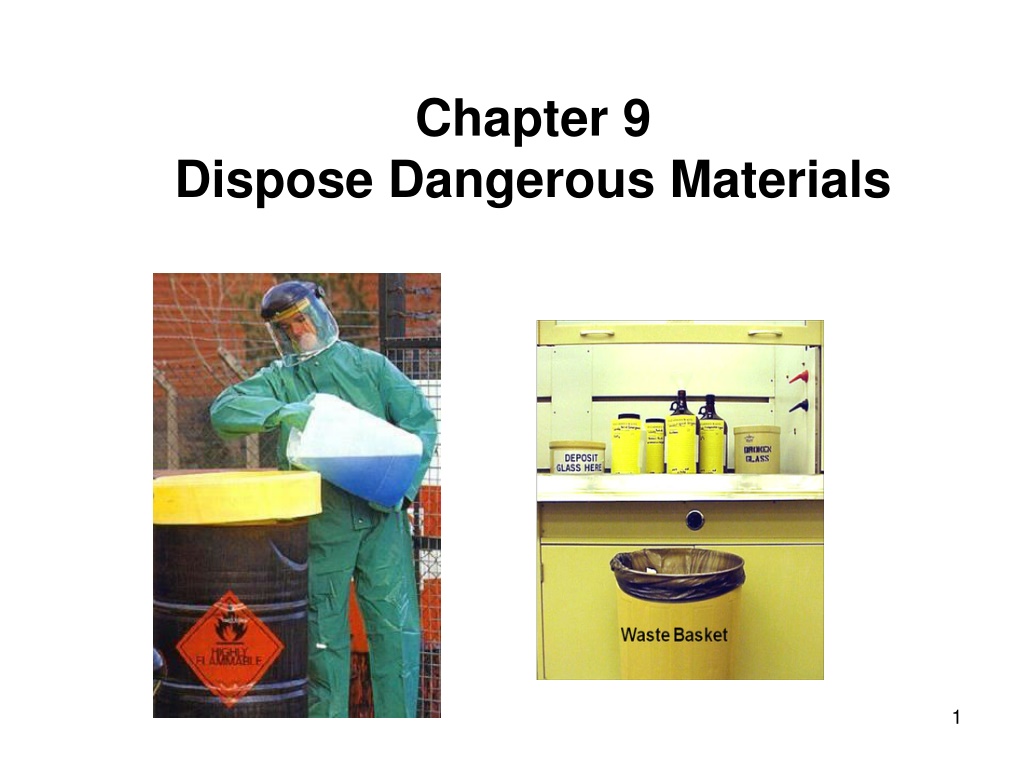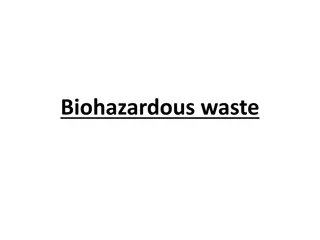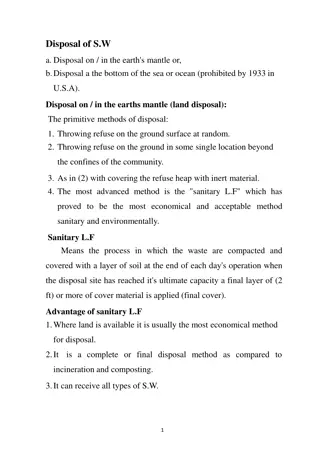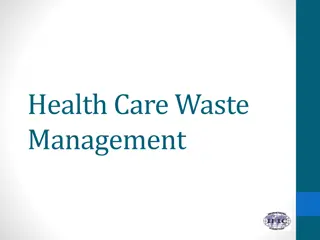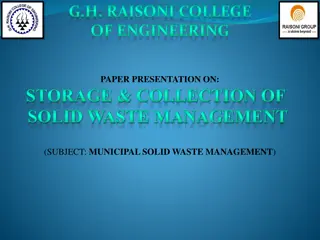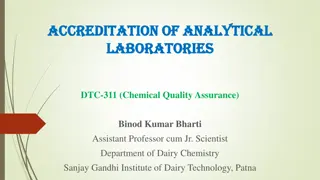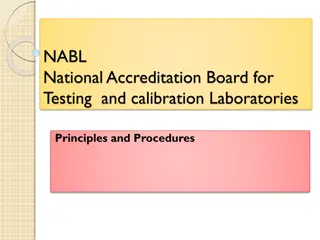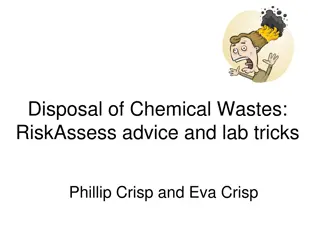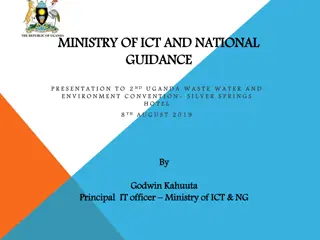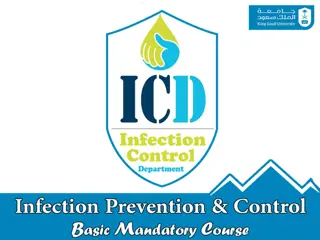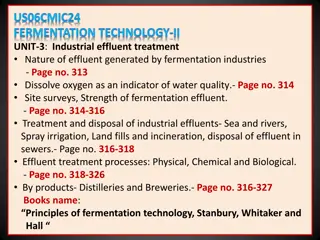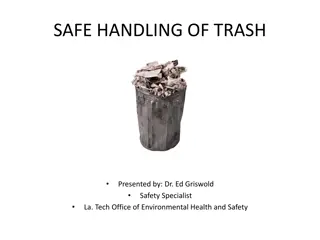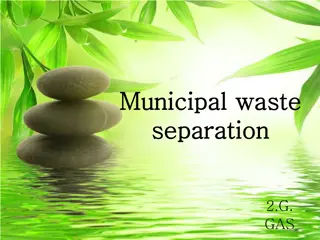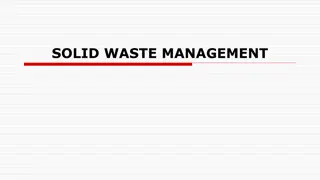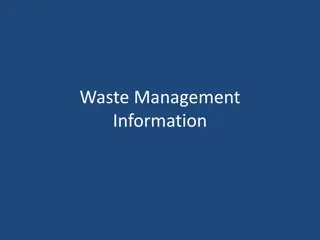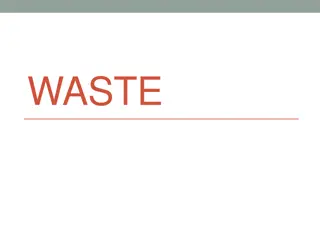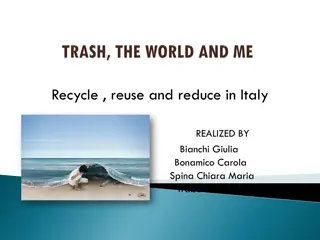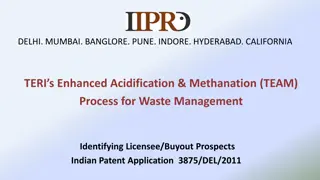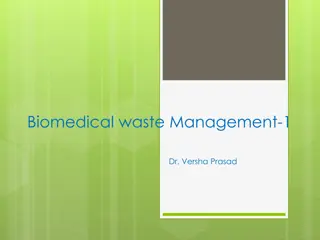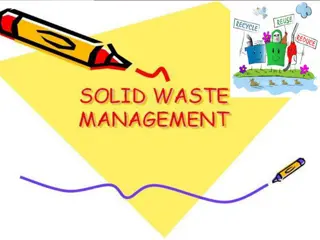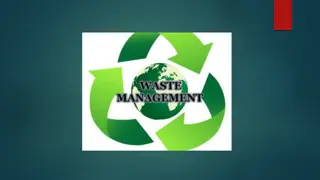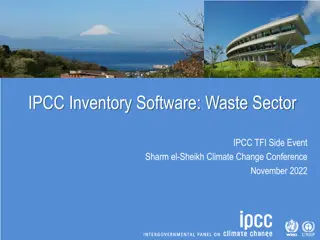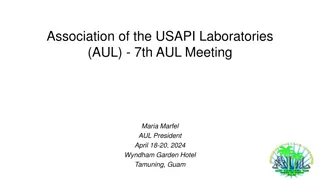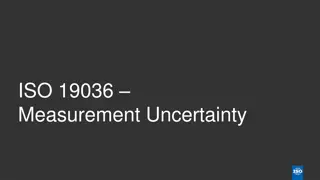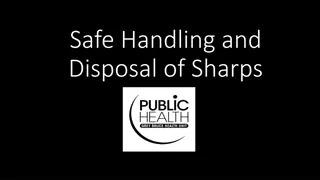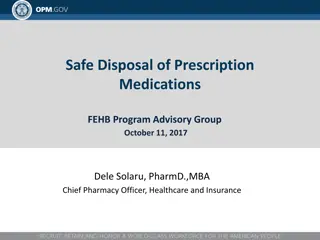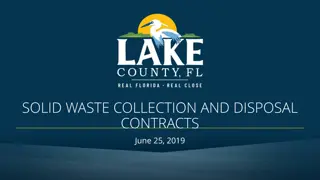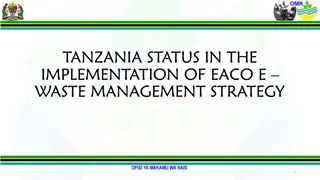Proper Disposal of Dangerous Chemical Waste in Laboratories
When disposing of dangerous materials in laboratories, it is crucial to follow established waste handling procedures to ensure safety and compliance. This includes using waste bottles provided by instructors, avoiding pouring substances down drains, and storing and labeling containers properly. Chemical wastes should not be mixed with biohazardous or radioactive wastes, and hazardous liquids must not be flushed down drains. Proper packaging, labeling, and storage are essential to prevent accidents and ensure waste removal. Consult appropriate personnel for guidance on handling specific materials like organic peroxides and explosives.
- Chemical waste disposal
- Laboratory safety
- Hazardous materials
- Waste handling procedures
- Proper waste management
Download Presentation

Please find below an Image/Link to download the presentation.
The content on the website is provided AS IS for your information and personal use only. It may not be sold, licensed, or shared on other websites without obtaining consent from the author. Download presentation by click this link. If you encounter any issues during the download, it is possible that the publisher has removed the file from their server.
E N D
Presentation Transcript
Chapter 9 Dispose Dangerous Materials 1
Waste Disposal Discard waste as needed, during and at the end of each laboratory period. First ask your Instructor where/how to dispose of waste. Never pour anything down the drain unless you are told to do so. A waste bottle will be supplied for substance that cannot go down the drain 2
The following waste handling procedures are mandatory when preparing chemicals for disposal: Restrictions Containers Labels Storage Scheduling 3
Restrictions Chemical wastes sent for disposal should not be mixed with biohazardous or radioactive wastes. Hazardous liquids must not be flushed down drains as a method for disposal. This practice is illegal and may lead to dangerous reactions and damage to the draining system as well as create a potential hazard to trades personnel working on the system. Solid or liquid waste chemicals must not be mixed with general garbage. In order to avoid explosions, fires or spills, incompatible combinations of chemicals must not be mixed in a single container. 4
Restrictions The waste generator bears the primary responsibility for proper packaging and labeling. If the Manager, Environmental Protection (Hazardous Materials) overseeing the collection has any doubts about proper labeling or packaging techniques, waste will not be removed until it is properly prepared. Materials requiring special handling include organic peroxides, biphenyls] and explosives. Before disposing these materials, consult the coordinator and/or the Hazardous Waste Management. PCBs [polychlorinated 5
Container All containers used for storing chemical waste must be sealed and undamaged.(crocks or rubber stopper are not recommended) Liquid waste containers should only be filled to 70-80% capacity. Why? Container material must be compatible with stored chemical waste ( eg. Hydrofluoric acid cannot be stored in glass container. Why? 6
Labels To prevent the mixing of waste which could create an incompatible reaction, all materials must be clearly identified by means of standard Chemical Waste labels provided by the Hazardous Waste Management. The following information must be provided: Specific generic names of the components in the container along with approximate percentages of each component present must be listed. No abbreviations or trade mark names are to be used. Vague categories [eg. solvent waste] are not acceptable. Building name, room number and individual to contact. The general hazards can be indicated by marking the appropriate boxes on the Chemical Waste Label. If the waste is not identified, the containers will not be removed. 7
Storage Waste chemicals should, if possible, be stored in a central waste-holding facility of the building. If such a facility be non-existent, the chemical waste should be temporarily stored in the generator's laboratory. All safety precautions required for handling and storage of chemicals will also be observed with generated wastes. It is recommended that waste be segregated according to compatibility groups. 8
Scheduling If a building has a central waste-holding facility, the individual managing the area is responsible for scheduling collection. If chemical waste is stored in an individual's laboratory, it is the responsibility of Management to schedule a waste collection. Chemical waste must not be allowed to accumulate. The frequency of collection is dependent upon the type and amount of waste generated. Waste or empty gas cylinders generally can be returned directly to the supplier. If this is not possible, contact the Hazardous Waste Management. the Hazardous Waste 9
Segregation of Incompatible Chemical Waste Waste chemicals should be stored according to the following groupings based on chemical reactivity's. For any waste that cannot be classified according to these groups, the Management should be consulted. Materials requiring special handling include organic peroxides, PCBs [polychlorinated biphenyls] and explosives. Before disposing these materials, consult the Hazardous Waste Management. Group A to F and special group. (page 160-161) Chemical Incompatibilities. page 161-162 Hazardous Waste 10
Safety precaution Always wear splash proof goggles, gloves and laboratory coat when handling waste. For waste that evolves fumes and vapor, the transferring of waste should be done inside a fume cupboard. A new waste should be poured only after it has passed the compatibility test that should be preformed in a fume hood. To prevent escape of fumes and vapors, close the container tightly. Highly reactive compound, water reactive compound, concentrated strong oxidizing or reducing agents should never be mixed with other chemical waste. If chemical waste is handled outside a fume cupboard, the waste handler may need to wear a respirator equipped. 11
Summary Waste Disposal Restrictions Containers Labels Storage Scheduling Segregation of Incompatible Chemical Waste Chemical Incompatibilities Safety precaution 12
